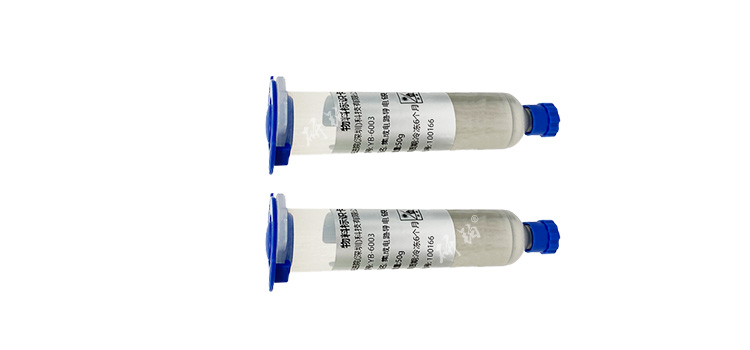1. Unique sintering temperature
The YB-5001 sintered silver from Advanced Institute Technology utilizes the surface energy of nano silver particles to complete the sintering process by heating it to 160 degrees Celsius in a regular oven without the need for pressure. By comparison, the general
Conductive silver adhesiveYB-6001 requires a lower temperature and only needs to be heated to 90 degrees to cure. By comparison, we can see that sintered silver has a higher temperature tolerance.
2. Difference in reliability
Cold and hot cycle testing is an important indicator for evaluating material reliability. Research has found that sintered silver only experiences its first failure after 2000 cold and hot cycles, while ordinary conductive silver paste can only withstand 200 cold and hot cycles. This indicates that sintered silver performs better in terms of reliability and has a longer service life.
 3. Differences in thermal conductivity
3. Differences in thermal conductivity
Thermal conductivity is an important indicator for measuring the thermal conductivity of materials. The thermal conductivity of pressureless sintered silver can reach over 100W/m.K, while the thermal conductivity in general conductive silver paste is between a few watts, and a thermal conductivity of over 20W in conductive silver paste is considered relatively high. This indicates that sintered silver has significant advantages in thermal conductivity compared to conductive silver paste.
4. Differences in conductivity
Volume resistance is an important indicator for evaluating the conductivity of conductive materials. The volume resistance of sintered silver is usually in the range of 10-6 Ω· cm, while YB-5001 can even reach 4 × 10-6 Ω· cm, which is only about 60% lower than the conductivity of pure silver. The volume resistance of general conductive silver paste is generally in the range of 10-4 Ω· cm. This means that sintered silver has better conductivity.
5. Different requirements for bonding devices
Sintered silver is mainly used for bonding high-power devices, such as third-generation semiconductors, high-power LEDs, and RF devices. And general conductive silver adhesive is used to bond ordinary first generation integrated circuit packages and interfaces with low requirements for conductivity and thermal conductivity. Especially for high-power chip packaging,
Pressureless sintered silverYB-5001 demonstrates advantages that traditional solutions cannot match.
From the above analysis, we can see that there are significant differences between sintered silver and ordinary conductive silver paste in terms of sintering temperature, reliability, thermal conductivity, conductivity, and the requirements for bonding devices. When selecting materials, it is necessary to determine the most suitable material based on specific application scenarios to ensure the best results are achieved.





